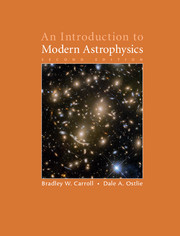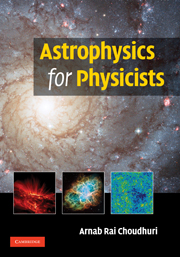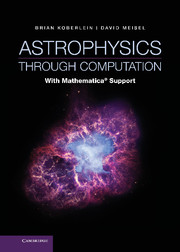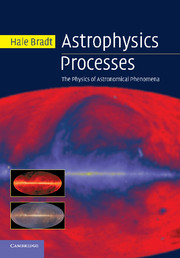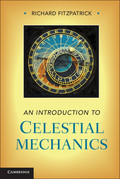An Introduction to Modern Astrophysics
An Introduction to Modern Astrophysics is a comprehensive, well-organized and engaging text covering every major area of modern astrophysics, from the solar system and stellar astronomy to galactic and extragalactic astrophysics, and cosmology. Designed to provide students with a working knowledge of modern astrophysics, this textbook is suitable for astronomy and physics majors who have had a first-year introductory physics course with calculus. Featuring a brief summary of the main scientific discoveries that have led to our current understanding of the universe; worked examples to facilitate the understanding of the concepts presented in the book; end-of-chapter problems to practice the skills acquired; and computational exercises to numerically model astronomical systems, the second edition of An Introduction to Modern Astrophysics is the go-to textbook for learning the core astrophysics curriculum as well as the many advances in the field.
- Provides a comprehensive and engaging coverage of the core astrophysics curriculum, from stellar astrophysics and the Solar System to galaxies and cosmology, with an emphasis on the fundamental concepts and relationships
- Is widely recognized as a reliable and consistent source of reference material, including for graduate students and researchers
- Provides explicit links to the professional and research literature in the field - Students can refer to these sources to explore more advanced topics
Product details
October 2017Hardback
9781108422161
1359 pages
253 × 190 × 55 mm
2.41kg
Available
Table of Contents
- Preface
- Part I. The Tools of Astronomy:
- 1. The celestial sphere
- 2. Celestial mechanics
- 3. The continuous spectrum of light
- 4. The theory of special relativity
- 5. The interaction of light and matter
- 6. Telescopes
- Part II. The Nature of Stars:
- 7. Binary systems and stellar parameters
- 8. The classification of stellar spectra
- 9. Stellar atmospheres
- 10. The interiors of stars
- 11. The Sun
- 12. The interstellar medium and star formation
- 13. Main sequence and post-main-sequence stellar evolution
- 14. Stellar pulsation
- 15. The fate of massive stars
- 16. The degenerate remnants of stars
- 17. General relativity and black holes
- 18. Close binary star systems
- Part III. The Solar System:
- 19. Physical processes in the solar system
- 20. The terrestrial planets
- 21. The realms of the giant planets
- 22. Minor bodies of the solar system
- 23. Formation of planetary systems
- Part IV. Galaxies and the Universe:
- 24. The Milky Way Galaxy
- 25. The nature of galaxies
- 26. Galactic evolution
- 27. The structure of the Universe
- 28. Active galaxies
- 29. Cosmology
- 30. The early Universe
- Appendix A. Astronomical and physical constants
- Appendix B. Unit conversions
- Appendix C. Solar system data
- Appendix D. The constellations
- Appendix E. The brightest stars
- Appendix F. The nearest stars
- Appendix G. Stellar data
- Appendix H. The Messier catalog
- Appendix I. Constants, a programming module
- Appendix J. Orbit, a planetary orbit code
- Appendix K. TwoStars, a binary star code
- Appendix L. StatStar, a stellar structure code
- Appendix M. Galaxy, a tidal interaction code
- Appendix N. WMAP Data
- Suggested reading
- Index.

